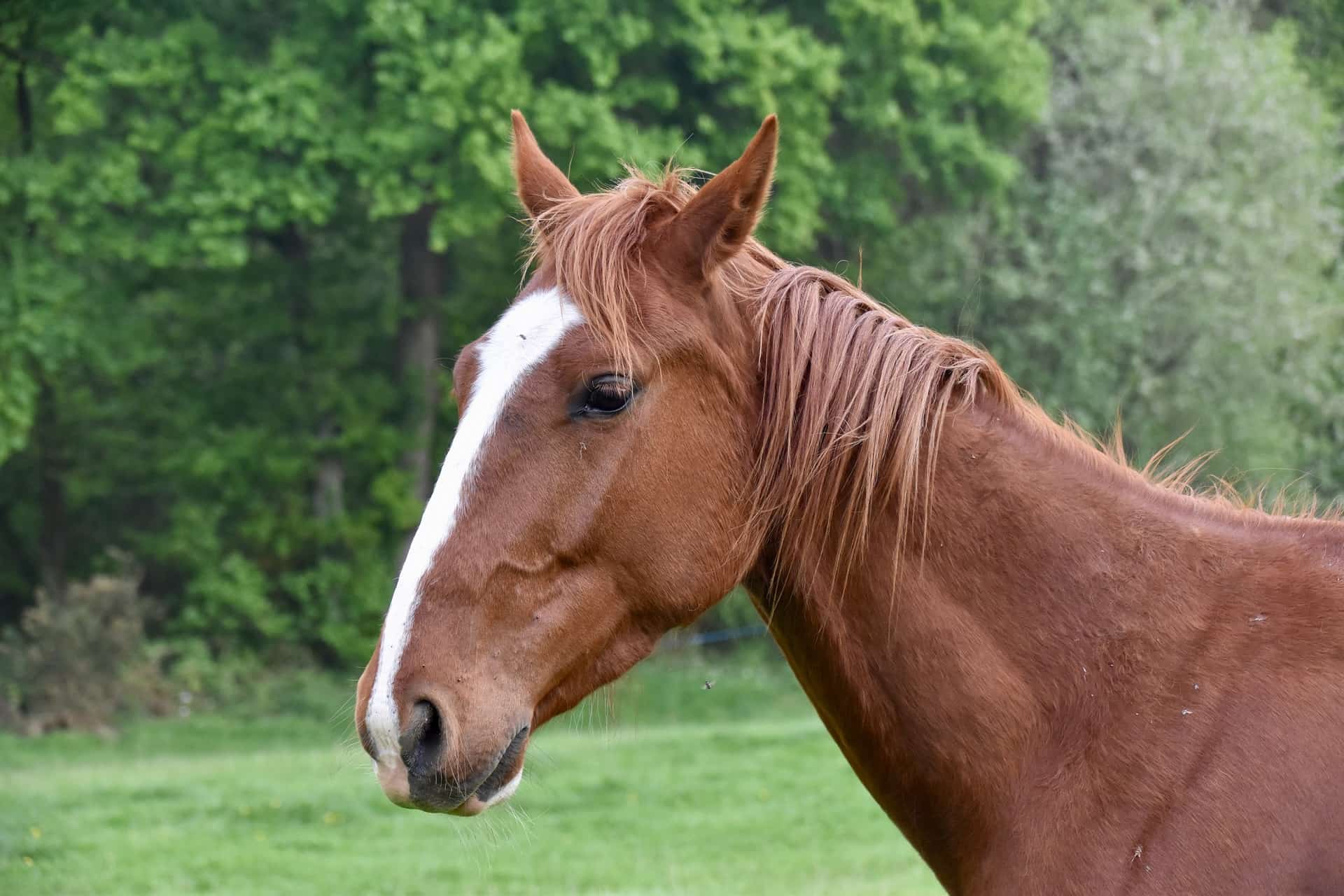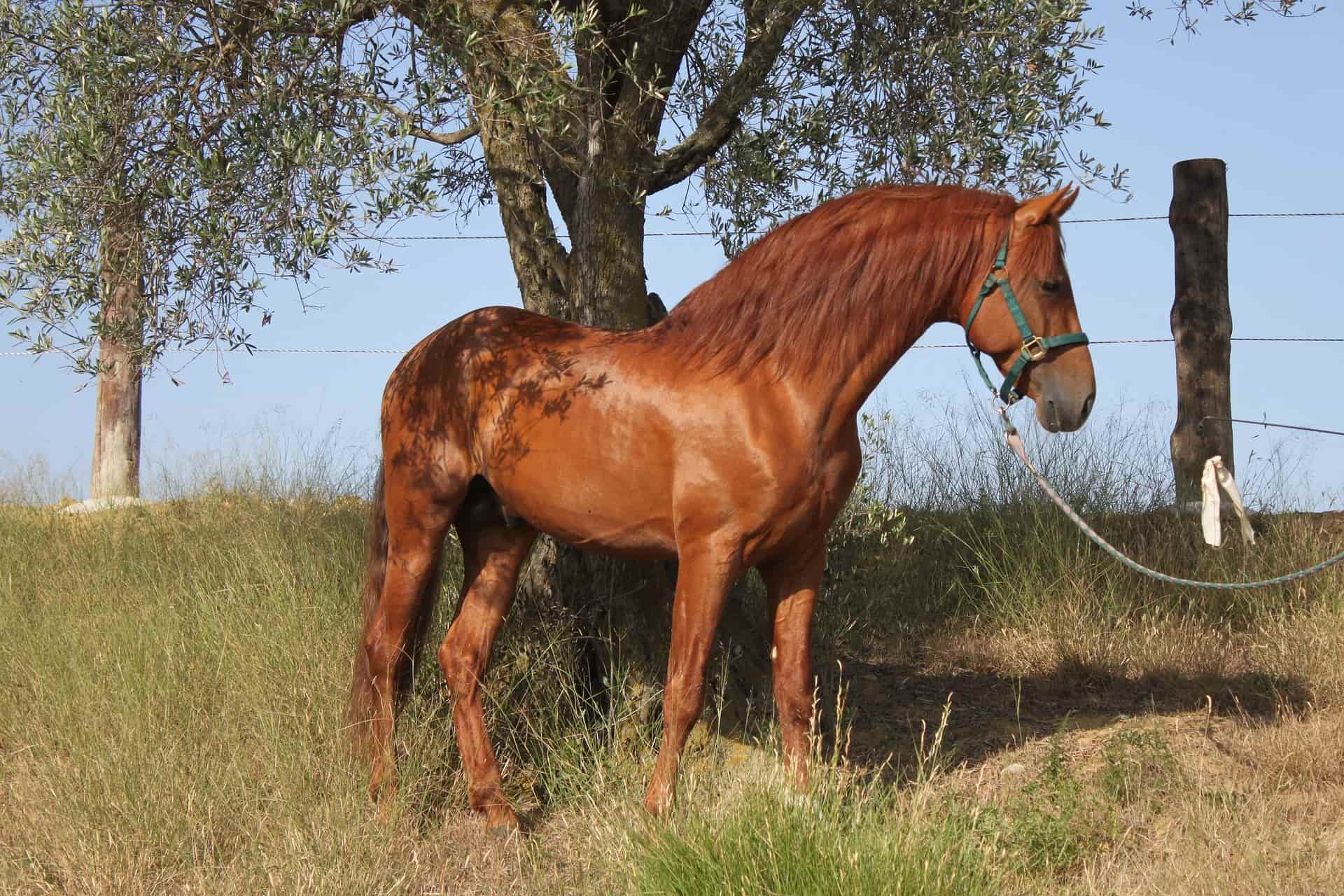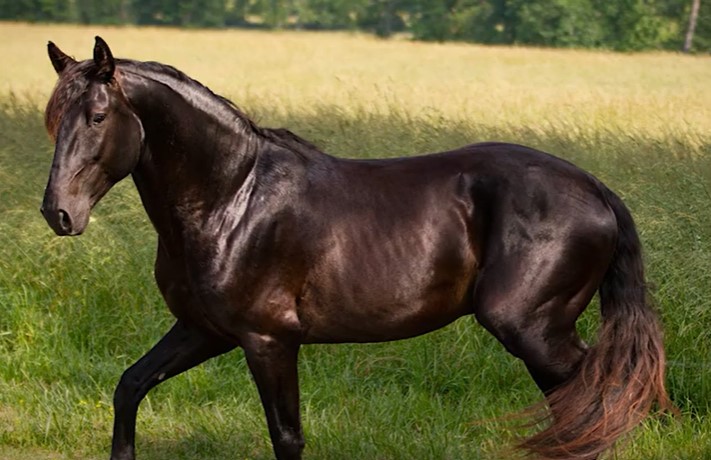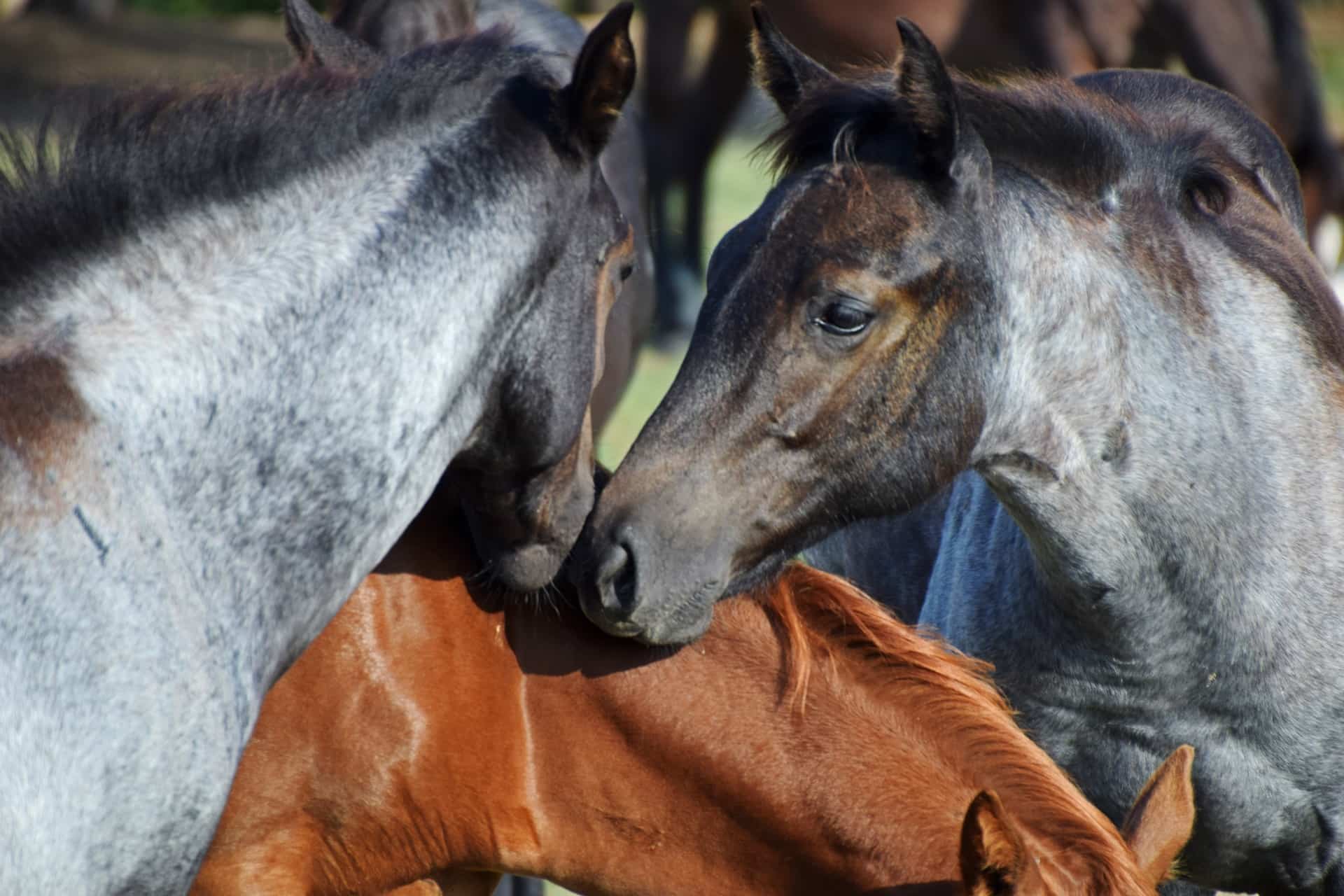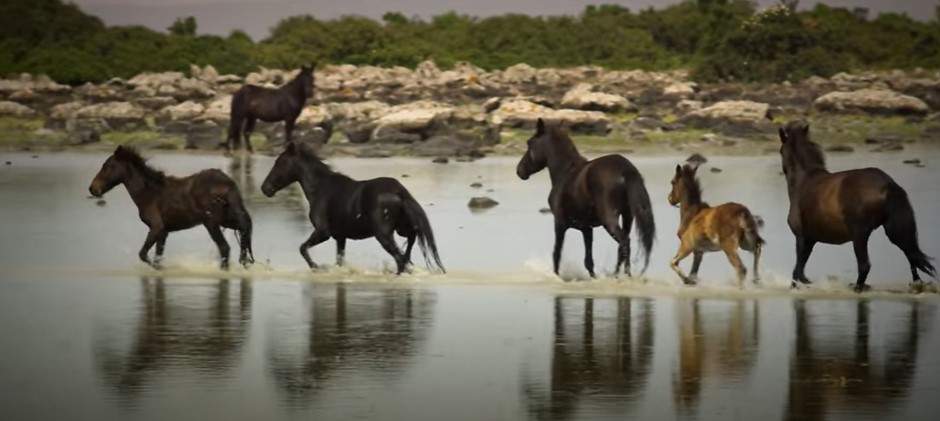France is famous for iconic landmarks – like the Eiffel Tower – museums, art galleries and cuisine. Unknown to many, this country is also home to some popular horse breeds.
French horse breeds come in a wide range of sizes, shapes and coat types. The majority were originally bred to help in the agricultural sector.
But thanks to mechanization, these breeds took a step back from this role. So they’re now used for recreational purposes or meat production. Read on to learn more about horse breeds native to France.
14 Most Popular French Horse Breeds
1. French Trotter
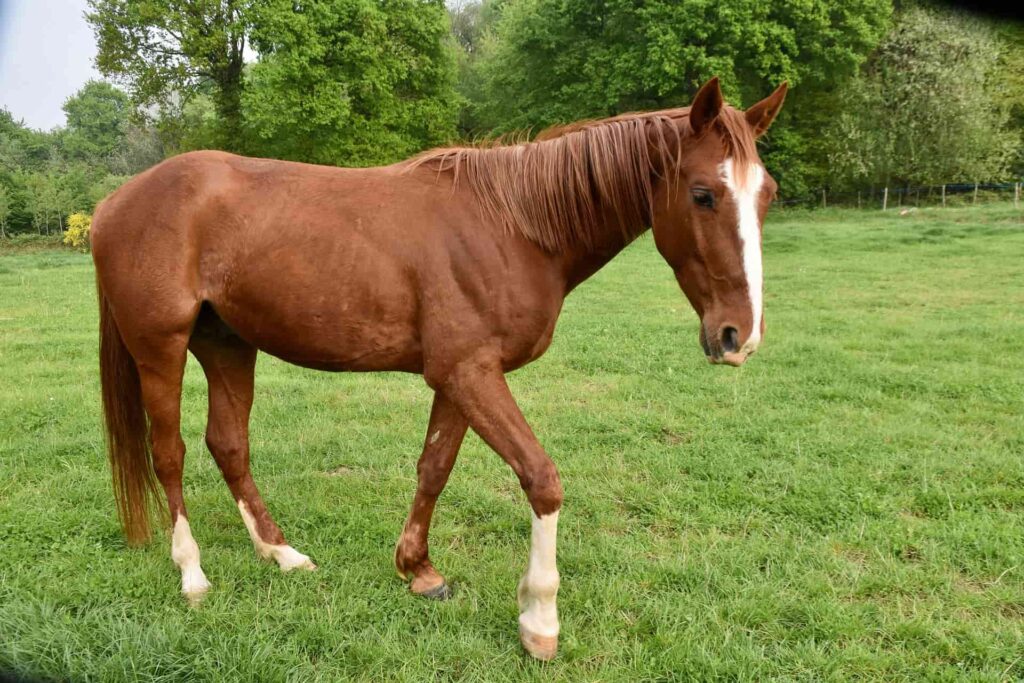
- Height: 60 to 68 inches
- Weight:1100 to 1433 lbs.
- Characteristics: Large head with wide eyes, wide chest, robust hooves and a strong back
The French Trotter is the only trotting horse breed that’s native to France. For this reason, it shouldn’t come as a shock that these horses dominate show jumping and harness racing competitions.
Developed during the 19th century in Normandy, French Trotters were produced by horse breeding different breeds.
The Carrossier Normand breed had the greatest influence on the development of the French Trotter. Unfortunately, the Normand is now extinct.
Other French horse breeds used were the English Thoroughbred, American Standardbred, Hackney and Norfolk Trotter.
When the Standardbred was introduced, many were worried that it would alter the Trotter’s gait because it’s a lateral pacing breed. However, the Trotter managed to retain its diagonal trot.
The modern French Trotter is a pretty big horse breed. It has an average height of 68 inches.
If you’re thinking of getting a French Trotter breed, there’s a good chance that you want to use it for racing. However, not all of these horses excel in this area. Those that don’t wind up being used for training and riding sessions.
2. Percheron
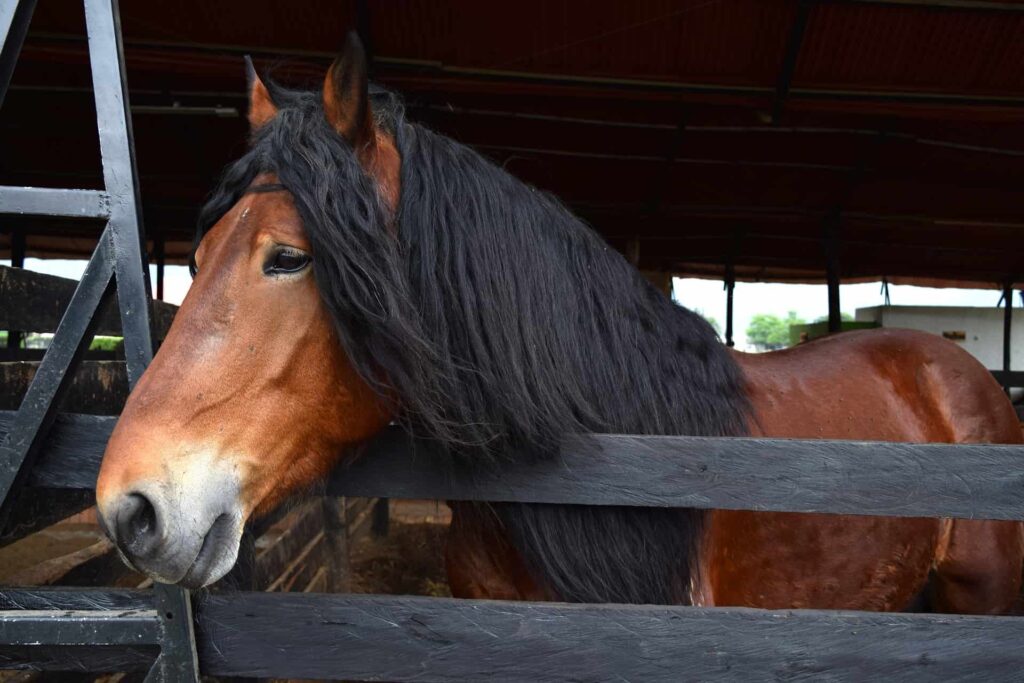
- Height: 60 to 76 inches
- Weight: 1800 to 2100 lbs.
- Characteristics: Long neck, small, refined head, muscled body
The history of the Percheron breed can be traced back to the Huisne river valley located in western France. Unfortunately, the specific details of how the breed was produced remain unknown.
The assumption is that Percherons resulted from crossing Barb horses with giant Flemish draft horse breeds. Later on, breeders decided to introduce Arabian horse bloodlines in a bid to make the breed more athletic. They’re also considered one of the most attractive black horses you’ll find.
3. French Saddle Pony
- Height: 48 to 57 inches
- Weight: Unknown
- Characteristics: Small head with a moderately convex profile, long neck, sloping shoulders
Compared to other breeds, the French Saddle Pony is the most recent. The concept behind its development was to create France’s distinct version of a riding pony; similar to the German and British riding ponies.
Taking this history into account, it’s not surprising to learn that the French Saddle Pony is a mixture of British and French pony breeds. To add to this, Thoroughbred and Arabian bloodlines were introduced into this breed.
The fact that these horses were developed from multiple breeds (mixed breed horses) has made it difficult to come up with a breed standard for it. As such, these ponies have an extensive height range of 48 to 57 inches. Similarly, these horses have a wide range of colors.
In terms of use, this breed makes an excellent saddle horse. It thrives in different competitions; be it show jumping, dressage or eventing, making it one of the impressive dressage breeds.
4. Auvergne
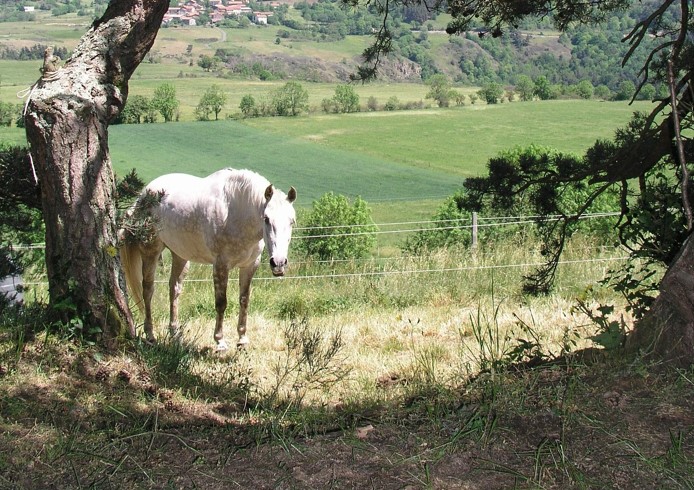
- Height: 56 to 58 inches
- Weight: 992 to 1433 lbs.
- Characteristics: Short head with bright and expressive eyes, short, rounded neck and a bay coat
This horse breed originates from the Auvergne area in central France. Bred primarily for trekking, this small riding horse comes in either a bay or seal brown color.
The Auvergne breed first gained recognition in 2012 when it was registered by Haras Nationaux or the French association of horse breeders.
The modern-day Auvergne is used extensively for pleasure riding, especially in its native land. This breed also excels in combined driving and competitive trail riding, making it a great trail riding horse.
5. Trait du Nord
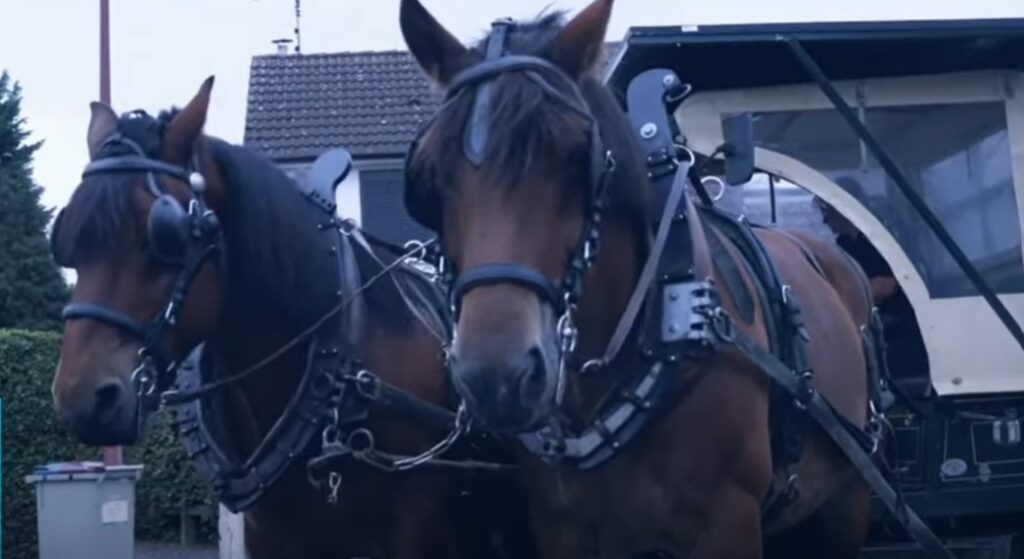
- Height: 65 to 67 inches
- Weight: 1800 to 2200 lbs.
- Characteristics: Gigantic and well-built frame, ample muscling and elegant gaits.
This is a large breed that was initially referred to as the Ardennais de type Nord.
An example of a heavy draft horse breed, the Trait du Nords were produced in two main regions: Northern France and Western Belgium. In the past, these horses were revered for their size and strength that proved very beneficial in the agricultural sector.
However, there was a point in time where this breed almost became extinct. This was following the invention of mechanization that caused a sharp decrease in the demand for work horses.
The saving grace for this breed was the fact that it excelled in riding and driving. Currently though, these horses have found more use in the forestry sector. Here, they’re used to log forested sections that cannot be accessed using standard machines.
6. Breton Horse
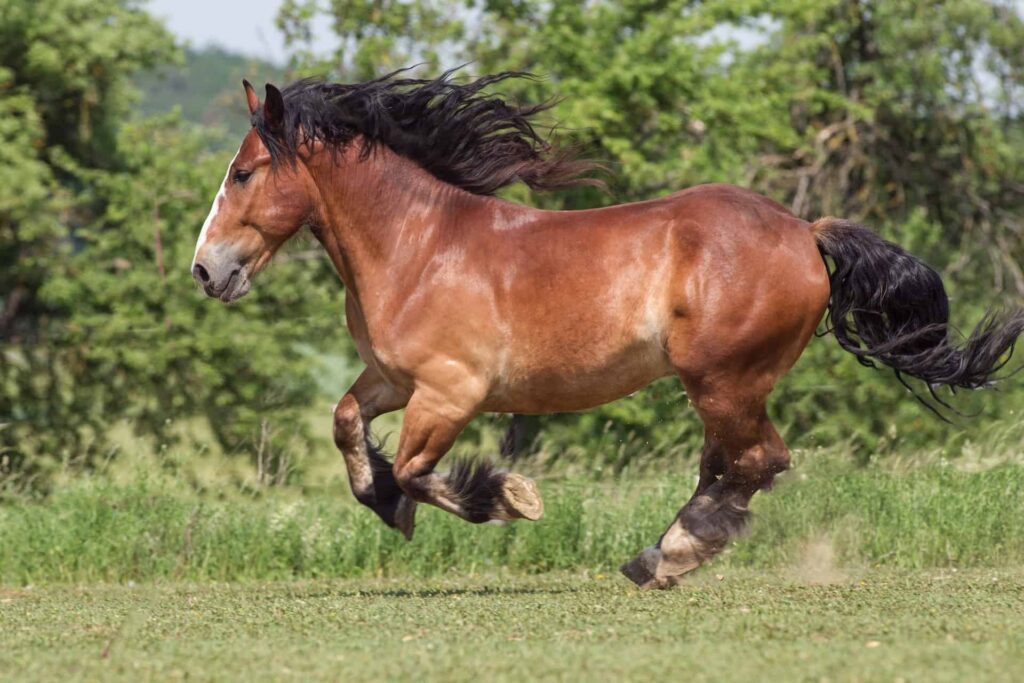
- Height: 61 to 64 inches
- Weight: 1250 to 1700 lbs.
- Characteristics: Short but strong legs, broad and short back, wide and muscular chest
Like the Trait du Nord, the Breton Horse is a draft breed. It comes from Brittany Province, which makes up Northwest France. Although the history of Breton horses isn’t very clear, it’s suspected that its descendants had European and Oriental blood.
Also interesting to note is that there are three varieties of the Breton horse breed. The Corlay Breton, which is the tiniest, is reserved for light-duty tasks.
The Postier Breton breed is of medium size making it suitable for light farm work. In addition to serving as a farm horse, this species is also used for harness racing. Finally, we have the Heavy Draft Breton used in hard draft work.
7. Anglo-Norman Horse
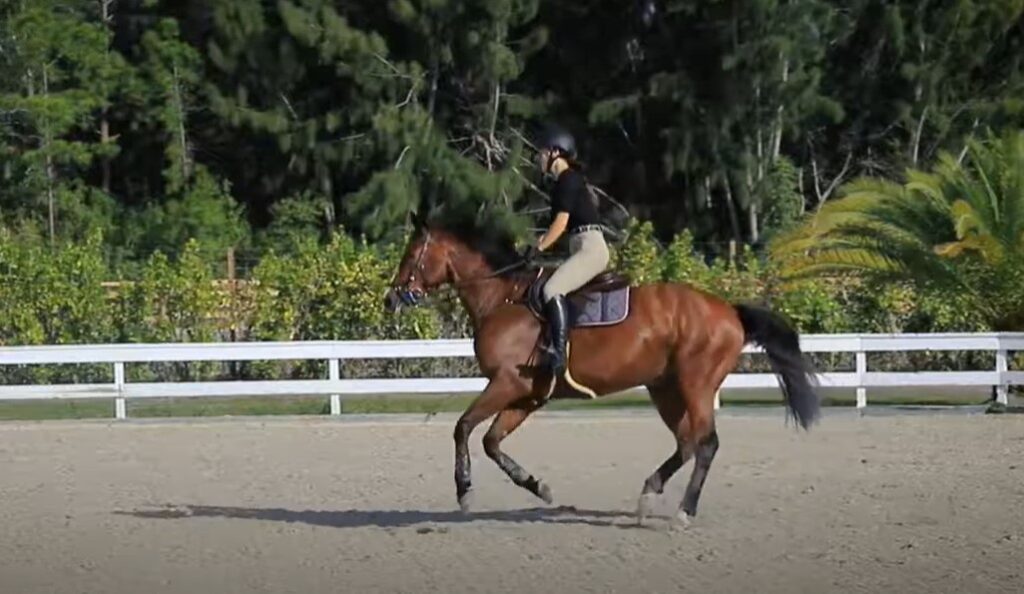
- Height: 60 to 65 inches
- Weight: 1200 lbs.
- Characteristics: Convex profile, long neck with robust shoulders and hindquarters
The Anglo-Norman horse is a warmblood breed with origins in Northern France. A mixture of Russian and British trotting horses, the breed can be found in numerous colors, including blue, roan, gray, chestnut and bay.
The Anglo-Norman, has also played a major role in the development of other breeds. Specifically, it was used to produce Polish Sokolsky, Hungarian Nonius and German Oldenburg.
The Anglo-Norman breeds are used extensively in the agricultural industry. The large horses are used for intense draft work while the smaller horses are used for light-duty tasks.
8. Camargue Horse
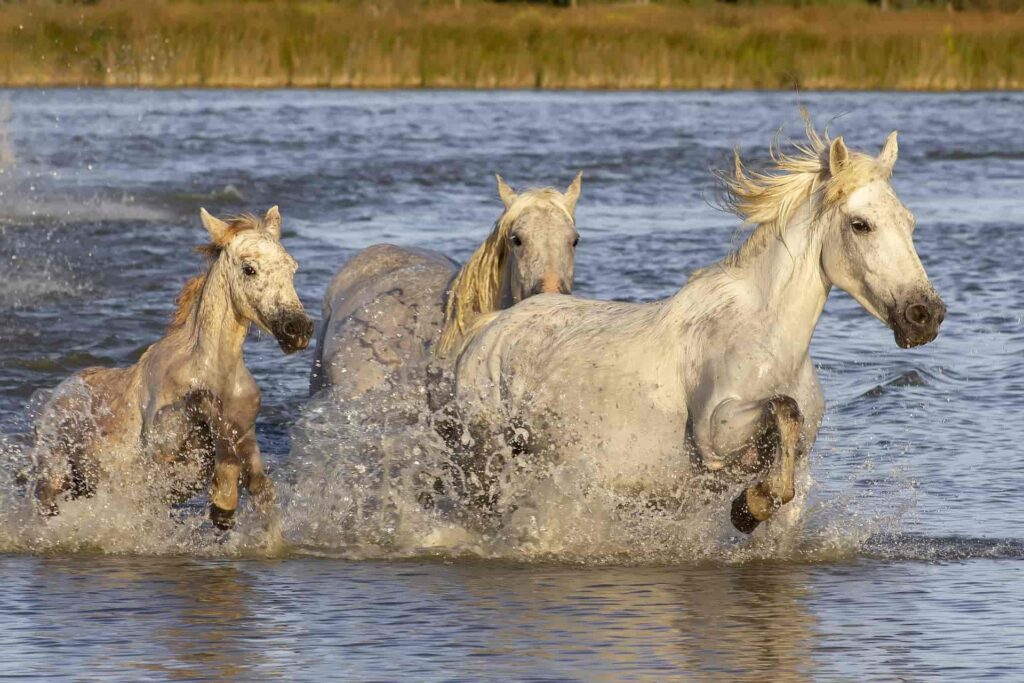
- Height: 52 to 54 inches
- Weight: 770 to 1100 lbs.
- Characteristics: Short neck, broad chest, compact profile with strong limbs and a long mane
The Camargue horse originates from Southern France, and is ranked one of the oldest horse breeds globally. In fact, it comes from the Solutre horse- an ancient breed that is now extinct.
Most Camargue horses have gray coats. To be a little more specific, they have black skins underneath whitish hair and coats.
Even more important is their height that ranges from 52 to 54 inches tall- a factor that qualifies them as a pony breed. While some of these horses roam freely in the wild, others are domesticated. The latter are used in ranch work and long-distance riding.
Camargue horses also seem to excel in other equine disciplines. These horses have successfully competed in several dressage and endurance riding events.
9. Selle Français
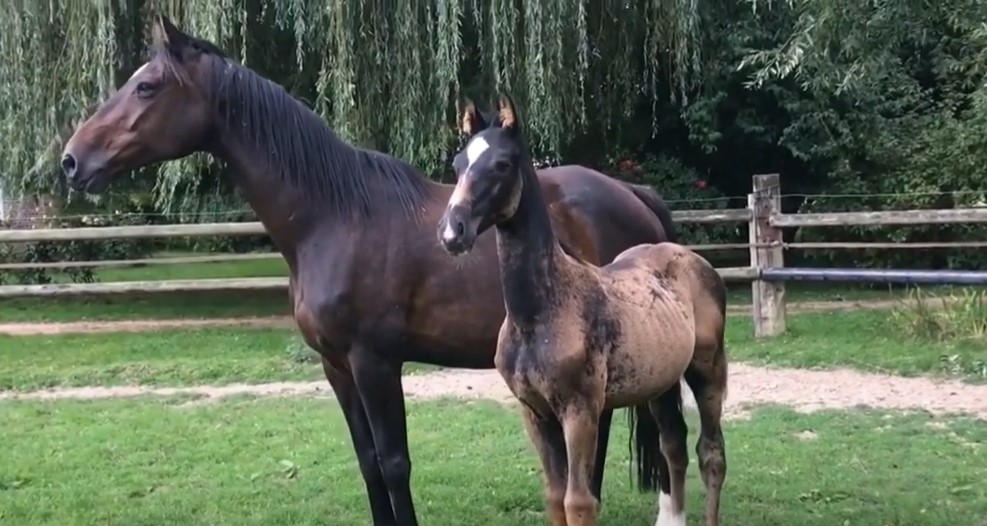
- Height: 64 to 69 inches
- Weight: 1300 lbs.
- Characteristics: Long sloping shoulders, a deep chest, stocky legs with pronounced joints
If there’s a French horse that’s found in almost every corner of the globe, it’s the Selle Français breed. An excellent sport horse, this animal was developed from cross-breeding the Norfolk Trotter with native French breeds.
The Selle Français comes in two main colors: chestnut and bay. However, you may also see some of these high priced horse breeds with gray coats. With an average horse height of 64 inches, they are popular in equestrian sporting events like horse racing, and show jumping.
10. Ardennes
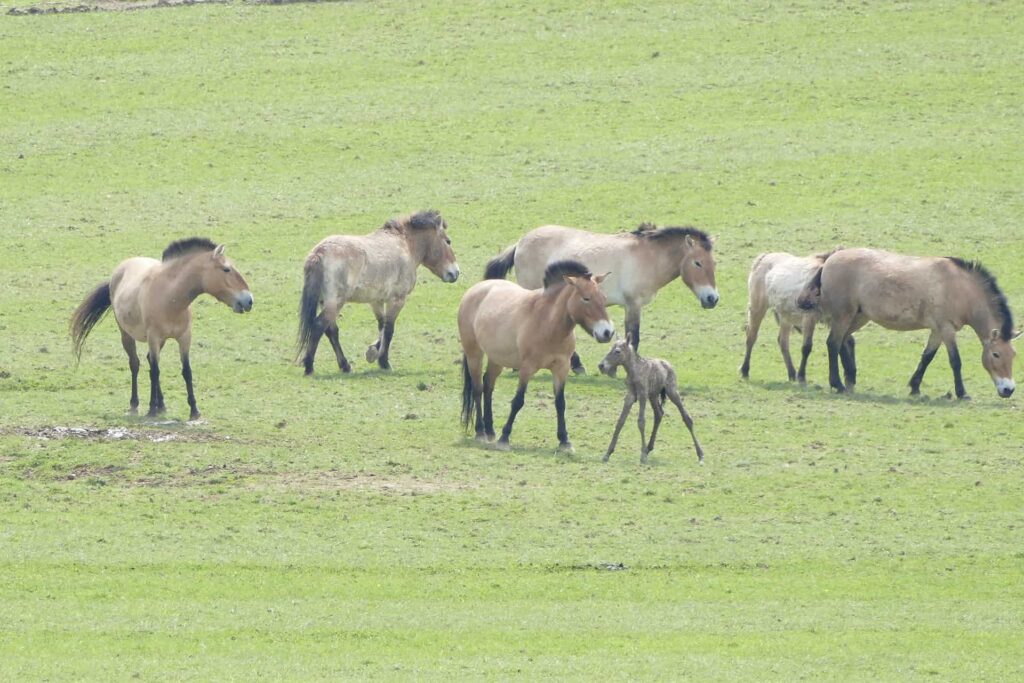
- Height: 61 to 64 inches
- Weight: 1500 to 2200 pounds
- Characteristics: Compact but heavy-boned, sturdy legs, and intense feathering at the fetlocks
This is also considered one of the oldest breeds, especially among draft horses. Despite being produced in France, the history of this breed is often traced back to Ancient Rome.
The Ancient Romans liked to use the descendants of the Ardennes horse as heavy cavalry units. So much so that even the renowned Roman emperor, Julius Caesar, mentioned the breed in his book, Commentarii de Bello Gallico.
11. Norman Cob
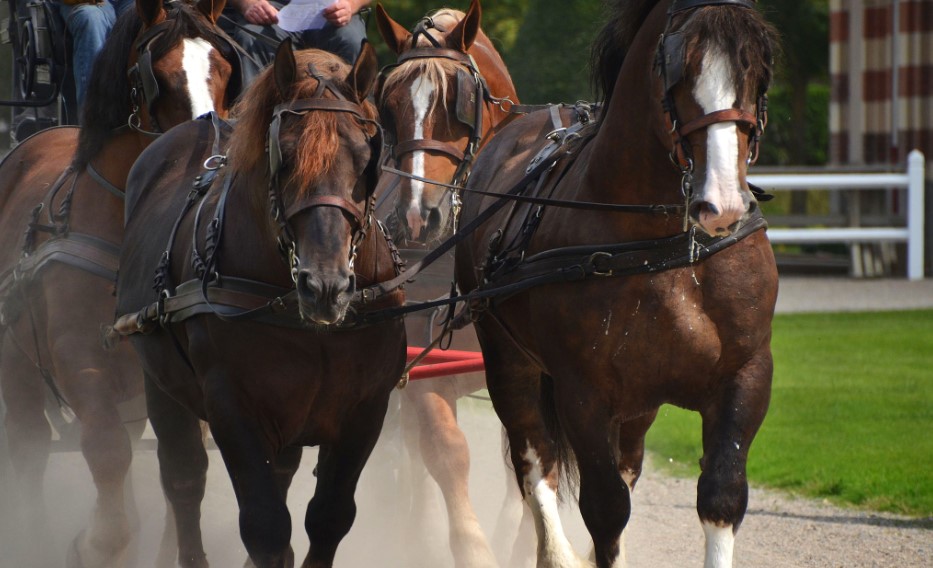
- Height: 61 to 64 inches
- Weight: 1200 to 2000 lbs.
- Characteristics: Angled shoulders, straight facial structure, deep chest, sturdy hindquarters and a muscular physique
Many draft horses come in giant sizes, but not all of them. Some, like the Norman Cob, are medium-sized. This light draft horse is named after Normandy, where it was developed. This region is also responsible for the production of other breeds, including the French Trotter and Percheron.
The Norman Cob descends from the Carossier Normand, a French horse produced by breeding small horses from the local region.
From the start, the Norman Cobs were bred to be a well-rounded breed. So not only did they serve as war horses but they also worked in farms and helped to deliver mail.
But today, the Norman Cob is used predominantly for meat production and recreational purposes.
12. Henson
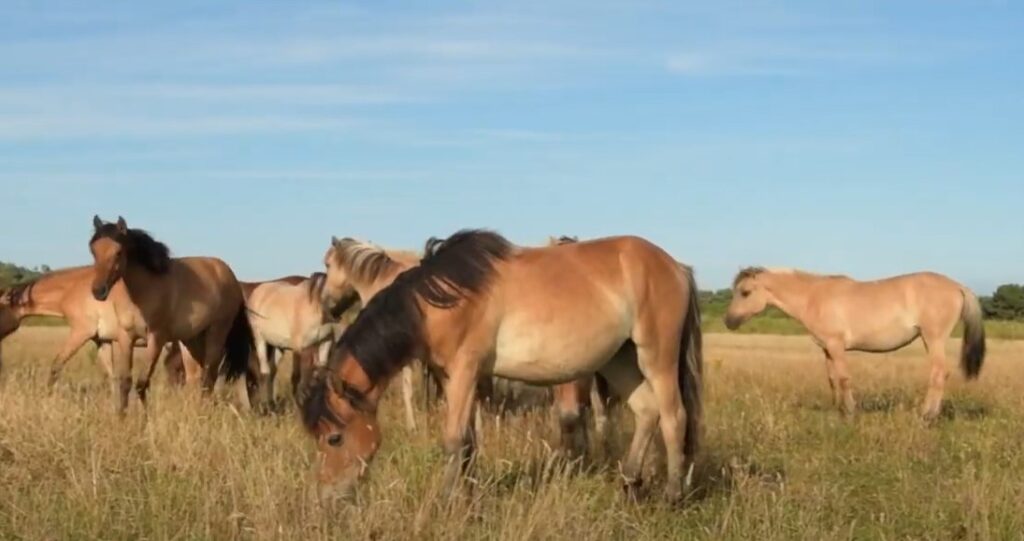
- Height: 56 to 61 inches
- Weight: Unknown
- Characteristics: Refined head with short ears and sharp eyes, big hindquarters and a chunky body
The Henson horse was created with the goal of improving equine tourism in France. A mixture of Fjord and light saddle horses, this breed gained formal recognition just recently in 2005. This is despite the breed’s association being formed earlier in 1983.
Henson horses can grow up to a maximum height of 61 inches. This, combined with the friendly dispositions explain why they’re used for pleasure riding.
13. Boulonnais
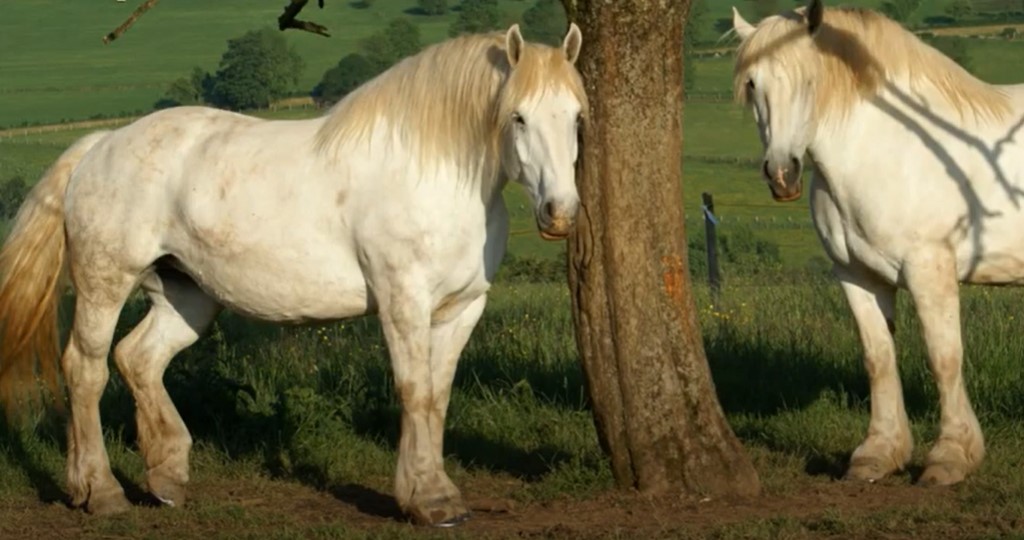
- Height: 60 to 65 inches
- Weight: 1430 to 1650 lbs.
- Characteristics: A full chest, fine skin with a polished marble look, elegant head, stocky neck
A noble and elegant horse, the Boulonnais is nicknamed the “white marble horse”. This is because of the markings on its body. The Boulonnais horse is mostly gray in color, and this stems from the introduction of Oriental blood.
Boulonnais horses are a relatively old breed. It’s believed that the French horse breed originated in the 17th century from a mixture of Arabian, Andalusian and Spanish horses.
The Boulonnais horse is of standard size, averaging 60 to 65 inches. It’s mainly used for meat production, dressage, eventing and show jumping.
14. Landais
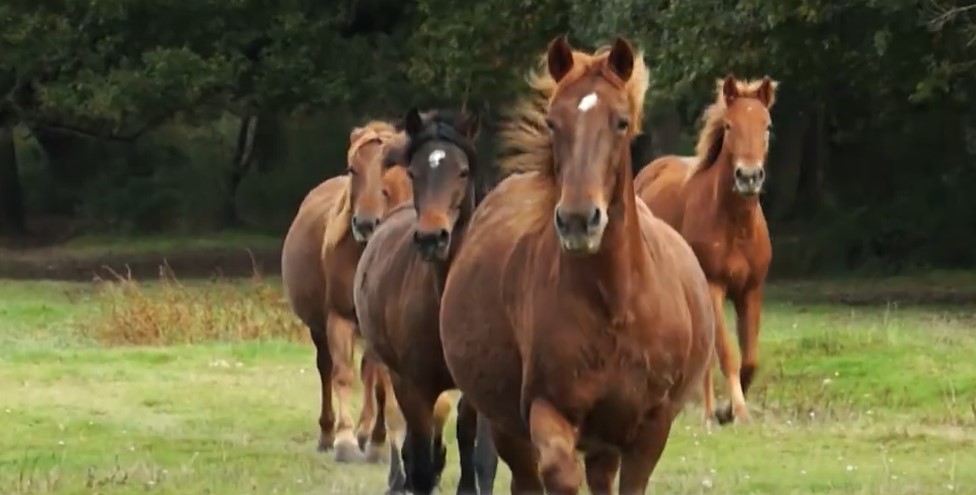
- Height: 44 to 52 inches
- Weight: 397 lbs.
- Characteristics: Sloping shoulders, full mane and tail, short and wide back
Although its history remains shrouded in mystery, experts believe the Landais to be among the oldest French horse breeds. Records of this breed suggest that its heritage can be traced back to 732 A.D.
Before World War II, these horses roamed freely in the wild. This explains why it’s a rare breed today with its population being really small.
The few Landais horses that exist exhibit fast trotting breeds. In fact, Landais currently holds the speed record for the distance between Paris and Chartres.
French Breeds Worth Mentioning
There are additional breeds that come from France, namely:
- Nivernais
- Merens
- Poitevin Horse
- Auxois
Also check out the most common Italian horse breeds for more beauties from Europe.
Conclusion
Anytime you’re purchasing a horse, be it a French breed or not, it’s good to consult a professional who can provide veterinary advice. The expert can even perform a few tests to ensure that the horse doesn’t have any health issues or genetic conditions.
That said, French horses are a delight to own. Most have a calm temperament, making them relatively easy to handle. Examples of the most common French horse breeds are: the French Trotter, Percheron, Anglo-Norman, and Trait du Nord.
